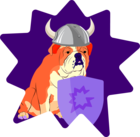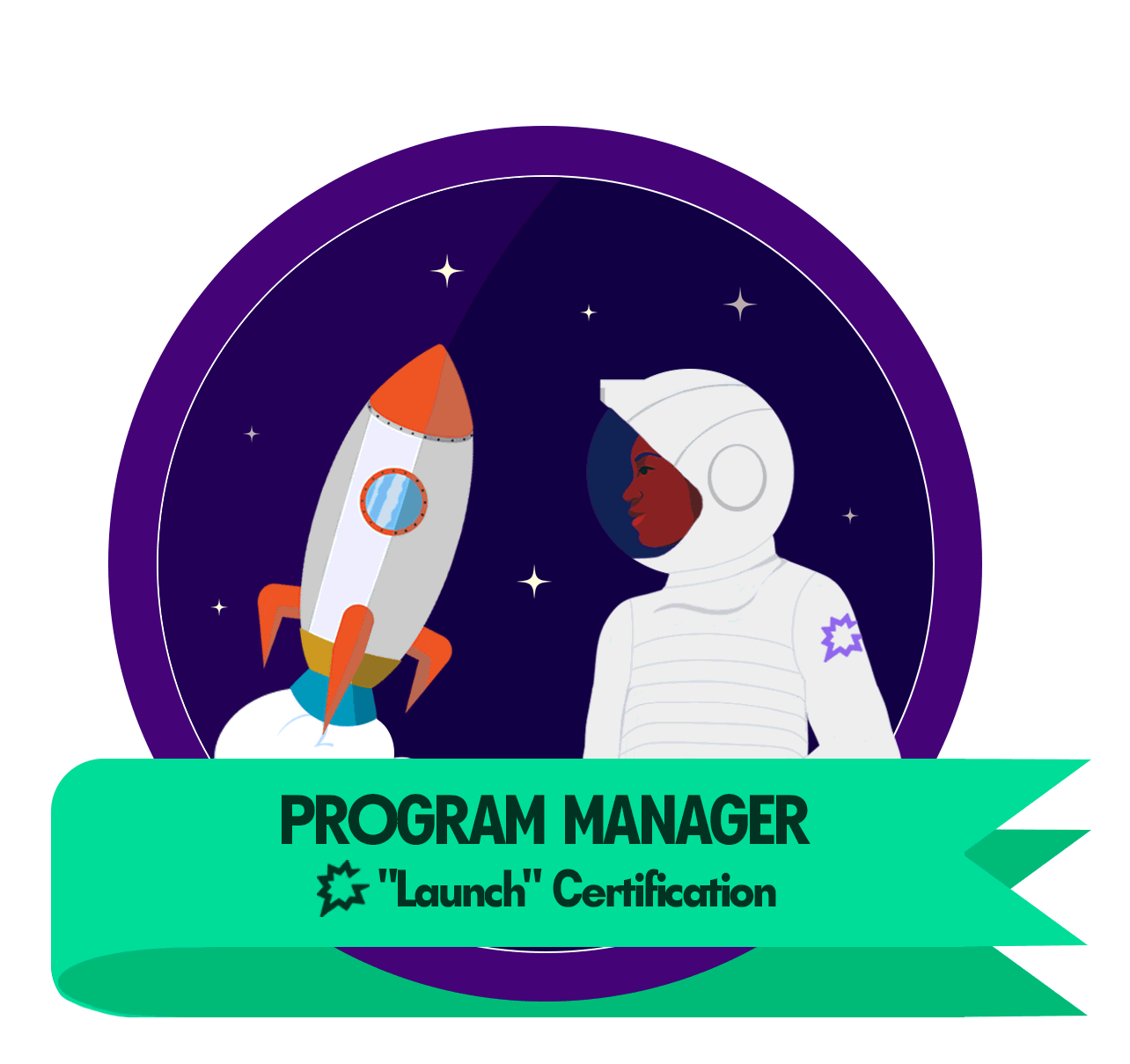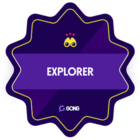No matter how big or small your organization is, rolling out any tool can feel daunting.
What’s your best piece of tactical advice for fellow Program Managers rolling out Gong at their organization?
Share it in the comments below!
No matter how big or small your organization is, rolling out any tool can feel daunting.
What’s your best piece of tactical advice for fellow Program Managers rolling out Gong at their organization?
Share it in the comments below!
I am so excited to have completed the Gong Program Manager Certification 🙌 After learning so much, playing around with the tools, and exploring automation, I have formed a concise plan to pick up false positives with your trackers. When I started creating trackers for our business, I noticed that the words/phrases in the trackers were appearing on +80% of our calls. To refine these trackers, I then went into Team > Trackers and analyzed the highest percentage present on calls. From there, I went to the team members that appeared on the right and investigated their calls. Here Gong focuses their calls and highlights the words that were detected from the tracker. It’s a great way to see general terms you inputted in the trackers that can be removed or tweaked to be more focused on the outcomes you want to achieve. Let me know if you implement this analysis tactic! 👍 It would bring me joy to know I was able to help out.
Having a successful rollout plan is key to adoption in a company. Feel so privileged to have taken this course to ensure our plan has what is requires to be a success.
I have joined two organizations that have already had Gong in place when I arrived. So my perspective comes from seeing how Gong is utilized at these two companies after it’s been in place. My advice is gain alignment from internal stakeholders/leaders and your support team at Gong about how to best utilize the tool and to determine a manageable rollout plan, including how much the rollout will require internally.
From my previous experience with rolling out new tools to sales and getting stakeholder buy-in, several action items need to happen. The implemetation needs to be well thought out from a timing perspective, does it make sense at that particular time. Executive leadership needs to be fully bought in with the reasons why this tool has benefits for sales. Sales Managers need to have this same buy-in to support their reps, and consistently use the tool, highlighting the benefits for their reps. Training is also another important piece for stakeholders, it needs to be easy to understand and presented in a few different ways. Live classes, supporting materials to reference and on-going education about enhancement and product changes. Finally, another huge buy-in factor, is sharing success stories from peers and how it helped close deals. Reps will trust peers about the benefits as opposed to just being told from leadership they need to use the tool. Also, sharing insights on a regular basis to see trends and the effect on their individual results.
Start with the end in mind. What are you trying to solve by rolling out / implementing Gong? What business problem are you focused on? Ensure you know the specific answer to that which will help you build out your implementation roadmap backwards.
You can then identify your goal and ideally when you’d like to reach it, what stakeholders are necessary to be apart of the journey, what supplies/tools/support you will need along the way and the metrics for success.
You can then work backwards with the “if” “then” track. If we are to be “here” at this date, then what needs to be true to make that happen? Identify all the possible scenarios that could derail you so you can anticipate and plan around potential roadblocks.
Meet with all the layers of your leadership team, Executive, Mid level and front line. Make certain they are read in and BOUGHT in on the rollout, the vision, the success metrics and they understand the expectations set for both their support and buy in as well as their teams. Make sure they are confident in their ability to deliver an effective talk track around the why, what and how and have access to anticipated questions they will get from the field during roll out. If you arm your managers in advance they will be your best ally during the process.
Prepare and set clear expectations with the users - start small and simple. And track progress. Communicate early and often about adoption and success stories - not matter how small those are. Build and internal groundswell and momentum with peers showcasing what they do well to further drive buy in and adoption.
I recently completed the Gong Program Manager Certification and it’s been an extremely valuable journey that every enablement professional at an organization should take the time to do.
In my line of work, I discover organizations that have incredible tools like Gong in place have only scratched the surface with their features and functions because nobody has the time to go deep enough to understand the true nuts & bolts of the solution. This leads to them not configuring (and maintaining) the tool to fit the sales motions that are specific to that organization.
My recommendation for anyone getting involved in a new or existing Gong instance is to create a checklist based on the education from the certification course, assign owners to tasks, and go through each of the points to make sure everything has been configured properly and/or is updated based on the current state of the business.
I have now used Gong at 2 different companies. The first was a first time implementation and here I’ve walking into a pre-set up instance. Gong has a lot of great features, but don’t lose sight of your plan of attack!
Here are a few recommendations for a first time install:
I have now used Gong at 2 different companies. The first was a first time implementation and here I’ve walking into a pre-set up instance. Gong has a lot of great features, but don’t lose sight of your plan of attack!
Here are a few recommendations for a first time install:
Love your recommendation to create a checklist! This is something we’ve heard more than once from folks rolling out Gong at their organizations. Thanks for sharing
 +2
+2This is my first time using Gong and I’m happy to have gotten the Certification exam behind me. Our relatively new company has recently implemented Gong and asked me to become the point-person. Gong has already been made available to our teams, but rollout was pretty rapid, and adoption has been slow (or null) with some areas. I am new to the company, but have been implementing Salesforce and other platforms that received a bit of pushback during rollouts. The same goes for my days in SaaS Sales, selling “disruptive” software that was automating processes in insurance offices that had been in place for 20-30 years.
So I know one of the key things to uncover prior to a rollout is “what is incentivizing the users to stick with the legacy workflow?”. Usually it is the perception of time saved.. Fear of being made redundant by “more efficient” software can be an issue, but probably much less likely with Gong. Using champions looks like a great rollout tool. Certainly on the Sales floor, the more efficient you are at targeting prospects and shortening sales cycle the more money you make. That is a very conspicuous reason to break old habits and try new things.
I’ve always been one to try to gamify onboarding, so I really like the Scavenger Hunt tool provided by Gong and plan to investigate using that for our own teams. The list of concerns from Sellers, especially the “Big Brother” pushback is helpful as well. Coming from Sales, I dreaded the ‘listening-in’ software when it was brought onboard, but now understand its importance.
My best piece of advice is to write the “why” story first. So many companies utilize so many things in their tech stack, so you want to be careful that this is not seen as “just another tool”. Hype this up way ahead of time by painting the picture of “if we could only know...” “what if we could see...” and then you hit them with the GUESS WHAT? Here comes a game changer for you!
Overall, don’t go into this in a rush. Build the why behind it and then let them unwrap the gift.
Without question - gaining buy-in from leadership, particularly front line leadership. In order for Gong to be most successful, it needs to be embedded into the culture of the organization. This means that weekly meetings, pipeline reviews, training, new roll-outs, and success metrics must be supported at the team level. This requires full leadership support, and assimilation.
Our company has recently switched back to Gong from another provider due to the increased functionality and reliability. Having used Gong in the past, one of our biggest goals with the ‘new’ role out is to present Gong as a much needed and useful employee tool, rather than a form of micro-management. Although we do have a road map for using Gong to help with performance reviews and sales coaching, we plan to hold off on that for at least a quarter to first focus on implementation and training around how individuals and teams can use Gong to become better in their roles. This is to say, teach our users how to track, evaluate and improve themselves… and allow this time to set in and become part of their process before managers start using the system to rate and critique communications as part of performance tracking or establishing coaching plans. Getting the buy in from sales/operations employees, the actually people in the trenches using Gong daily, is probably (in my experience) the number one thing needed to use Gong to its fullest potential.
Organization is KEY! I built out a detailed implementation plan based on all of the knowledge gained in the Program Manager Launch Certification and it helps so much with knowing I haven’t forgotten or overlooked any important steps in the process. It also allows me to ensure there is transparency across our leadership team on what steps are owned by whom, and by when they need to be completed!
I’m excited to get started on the Gong Program Manager Launch Certification! My best Gong rollout advice would be to ensure you have manager buy in and engagement, pre-rollout as well as during the initial phases. Having your sales reps look to their manager and see this confidence in the tool is crucial to getting them to initially adopt and trust the platform.
This is my first time utilizing Gong and I am happy to say I am excited to start the Gong Program Manager journey!
Working through the Gong Program Manager Launch Certification, the program is incredibly valuable for anyone looking to utilize or be the point person for Gong at their organization.
My one piece of advice is to ensure you utilize your program management and communication skills to its fullest. The main principles of new tech implementations apply here as well. Build out a very well organized and detailed implementation plan. Ensure there is transparency across the leadership team and key stakeholders alongside power users.
Do not take the advice on this page lightly. Read through all of these responses so that you can learn how to make the most of your Gong implementation. The benefits of Gong may seem obvious to you. But they are not obvious to everyone. I was surprised to find out that even sales reps can miss the value of the tool if you do not provide the necessary training and coaching. Make sure you have the buy-in from your frontline managers. They must assist you in driving adoption. Gong is very powerful and necessary. But if people do not use it, you’re just spending your company’s money.
I recommend leveraging your Sales Enablement team, if you have one, and collaborating with them to ensure that as you work on rolling out, the managers and users don’t just attend the training meetings. Still, it also helps to have refresher courses and training.
It also helps to roll out with a small group or a couple of teams first to ensure that everything is capturing properly in Gong, that your trackers are working, and that your Deal boards are capturing and showing what was intended for the team and managers. How you set up deal boards is also crucial! For example, we’ve built two separate deal boards; one includes tabs that break deals down by Stage and days since the last activity, and another has a cut for users to see deals by deal size.
Oh, and don’t forget to set up email notifications, slack notifications, and, most importantly CRM managed packages, so your data can seamlessly flow between your CRM and Gong, allow you to view conversation information within lead/account/opportunity objects (depending on how you build it out)
I’m happy to have completed the Gong PM Certification!
It’s definitely given me a lot more ideas and understanding of all of the different things we can do with Gong at our organization. However, it is A LOT. My recommendation for rollout (being about 3 months in ourselves) is to create a timeline split by quarter (or H1/H2) for the next 12 months:
 +1
+1I’ve been the program manager at my company for just over a year now and I have just completed the Gong PM certification.
The best piece of advice I can give to other program managers rolling out Gong is to get frontline managers to buy in. You can have the most optimal Deals board, trackers, call libraries, and streams for your business needs but your frontline managers need to understand the importance of all the tools Gong has to offer. You need to ensure that managers have a firm understanding of how Gong is solving their problems and perform their job with deeper insights. Without manager buy in, Gong can easily become just a call library. Managers need to be the one in Gong the most.
As a new ops and program manager, I have to agree with leadership buy in and support. A unified team that understands the value of the tool in our selling and internal process helps create trust in the enablement process. The sales team is more likely to invest real time into learning a tool that is bought in top down rather than use it as a simple call recording tool.
Rolling out Gong, or any software you need to make sure there is a focus on the following
 +1
+1When you prepare to launch Gong in your organization, you can locate a wealth of advice on building enthusiasm and encouraging participation for slow adopters and team members who are change adverse. However, don’t forget to prepare for fhe opposite scenario - overwhelming acceptance and an immediate increase in users. Be proactive and develop an intake process to handle accelerated provisioning, user questions, support and feature requests and continuous learning to support timely communication, maintain momentum and satisfy customers. A collaborative plan helps set realistic expectations and establish the foundation for program success.
Echoing other comments on here saying management buy-in in crucial. I have used similar tools in other companies, and the depth of reporting, trackers and search options makes it easy for my team to coach team members in an efficient manner. Don’t be afraid to play around with all the options Gong gives you, the more you learn about how Gong can expedite your coaching process, the easier it is to get higher level buy-in.
I would say that getting buy-in from your team is most important. Involve them early on in the implementation process, show them the value of the tool, get them sufficient training, etc. Once implemented, choose some reps to be Gong Champions or Gong Ambassadors that have a deeper knowledge of the tool and can advocate for it’s use.
The best advice that I can give is to be fully prepared before launching it to the team. This means that you as a program manager should have a broad knowledge of the tool especially the features that the team will use. You should also be prepared for any questions or issues that may come up before, during, and after the launch.
Enter your E-mail address. We'll send you an e-mail with instructions to reset your password.
Sorry, we're still checking this file's contents to make sure it's safe to download. Please try again in a few minutes.
OKSorry, our virus scanner detected that this file isn't safe to download.
OKWe use cookies to enhance and personalize your experience. If you accept you agree to our full cookie policy. Learn more about our cookies.
We use 3 different kinds of cookies. You can choose which cookies you want to accept. We need basic cookies to make this site work, therefore these are the minimum you can select. Learn more about our cookies.
